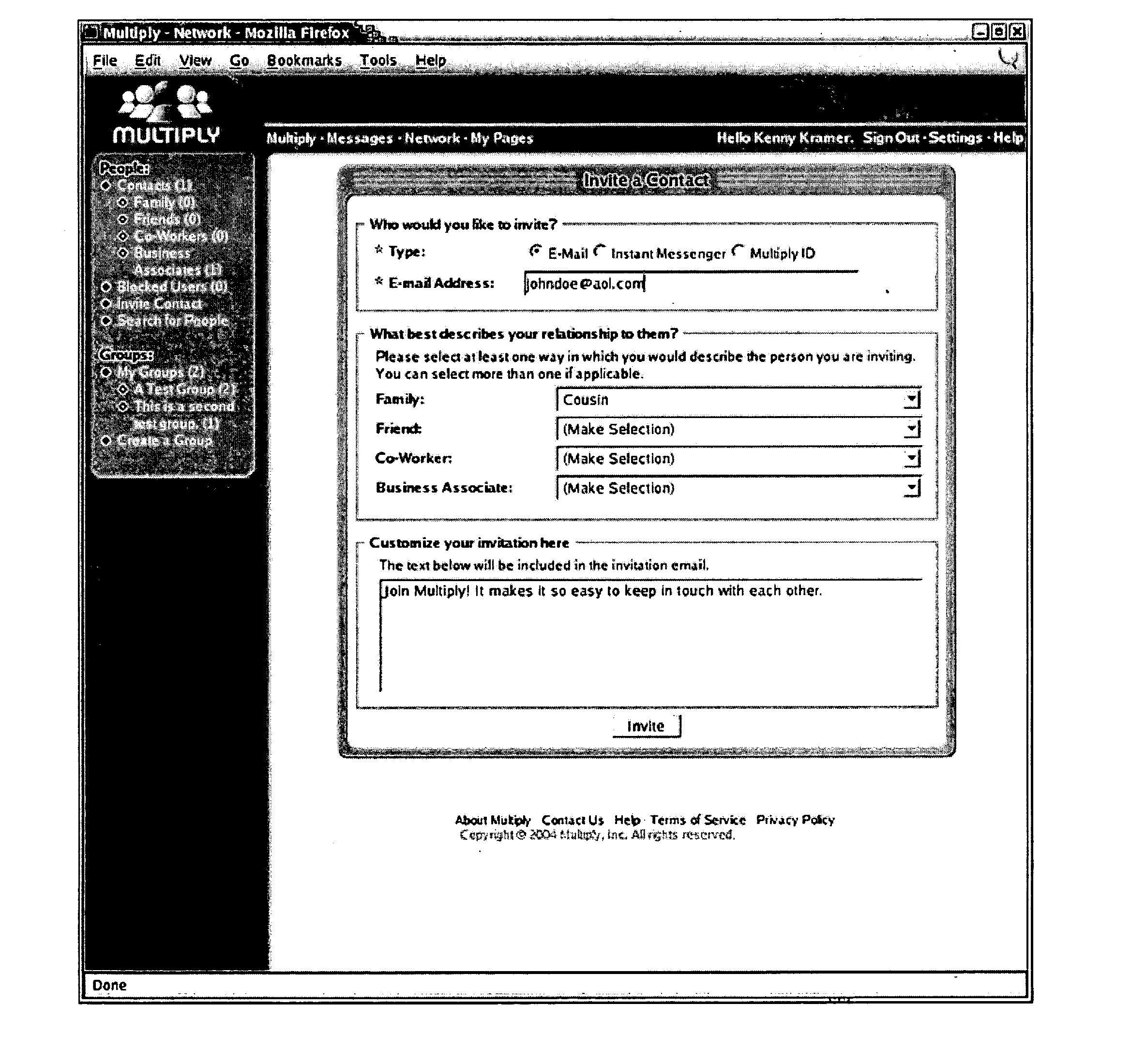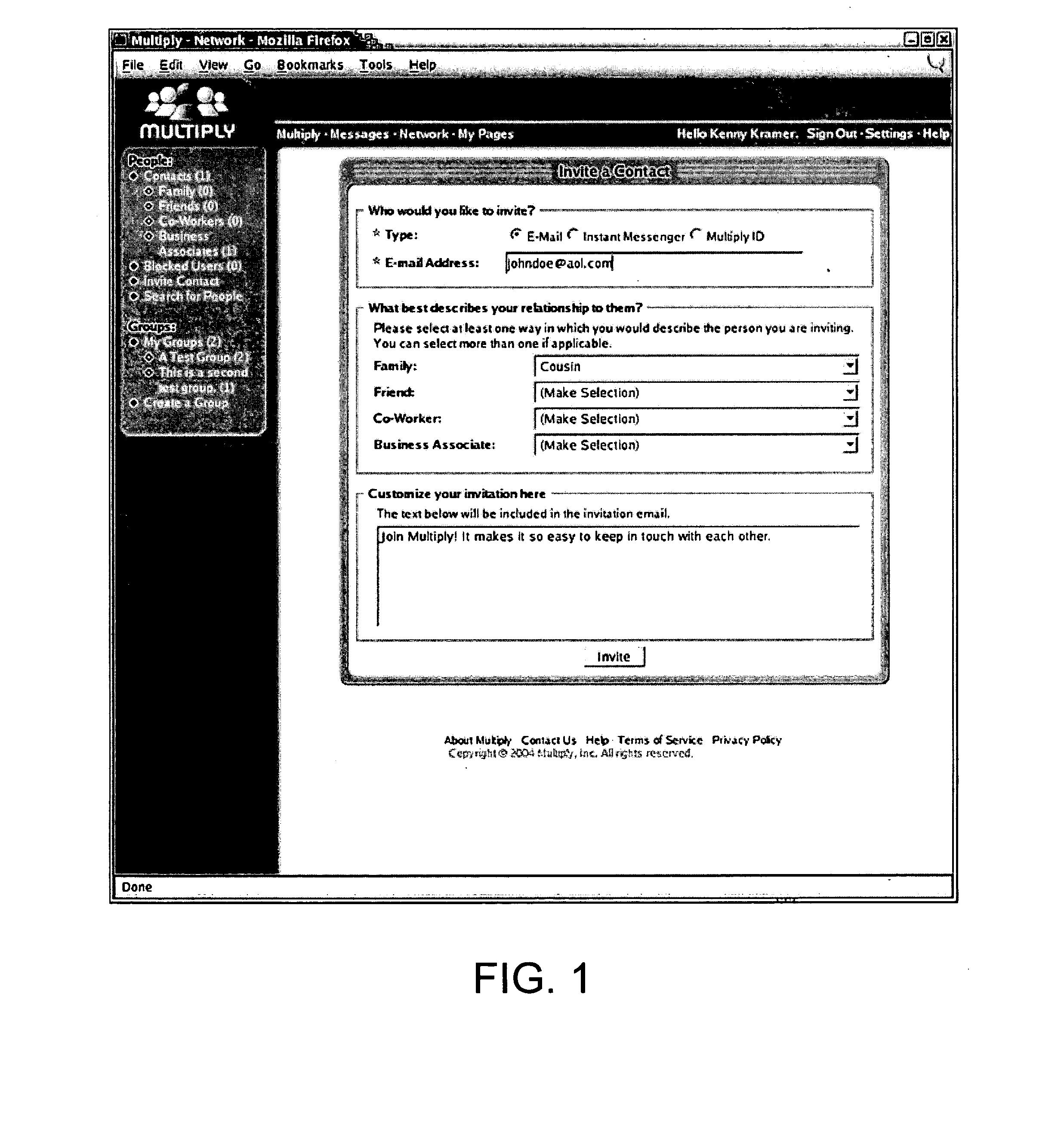Method and system for controlling access to user information in a social networking environment
- Summary
- Abstract
- Description
- Claims
- Application Information
AI Technical Summary
Benefits of technology
Problems solved by technology
Method used
Image
Examples
Embodiment Construction
[0039] The present invention generally relates to methods and systems for creating social networking environments. Specifically, the invention relates to controlling access to information in a social networking environment based on user-defined and / or system-generated parameters.
[0040] In an embodiment, a user may define one or more relationship designators to define the relationship between the user and a contact. In an embodiment, the social networking environment may generate a proximity index and / or a tier level to define the relationship between two users. In an embodiment, the social networking environment may determine a physical distance between two users based on, for example, the users' zip codes or street addresses. A social networking environment may use these, additional or alternate user-defined and system-generated parameters to define relationships between one or more users. The exemplary user-defined and system-generated parameters are described below.
Relationshi...
PUM
 Login to View More
Login to View More Abstract
Description
Claims
Application Information
 Login to View More
Login to View More - R&D
- Intellectual Property
- Life Sciences
- Materials
- Tech Scout
- Unparalleled Data Quality
- Higher Quality Content
- 60% Fewer Hallucinations
Browse by: Latest US Patents, China's latest patents, Technical Efficacy Thesaurus, Application Domain, Technology Topic, Popular Technical Reports.
© 2025 PatSnap. All rights reserved.Legal|Privacy policy|Modern Slavery Act Transparency Statement|Sitemap|About US| Contact US: help@patsnap.com



